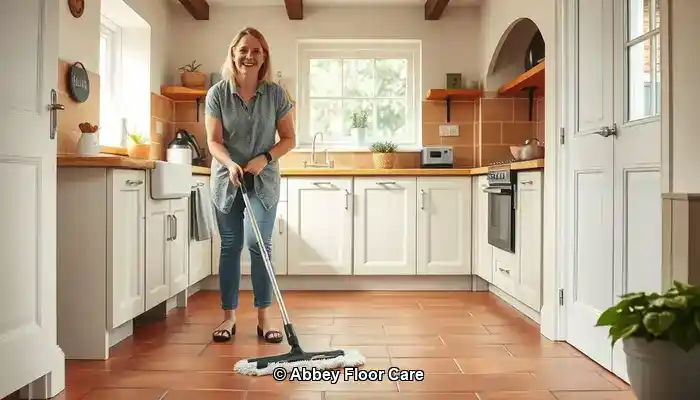
Last Updated on September 29, 2025 by David
Ultimate Guide to Maintaining Spotless Terracotta Tiles
-
- <b>Grasping the Porous Characteristics of Terracotta</b> emphasises its ability to absorb dirt rapidly, particularly in humid environments like Surrey.
- <b>Significance of Adequate Sealing</b> to effectively prevent moisture and grime from infiltrating your tiles.
- Establishing a Routine for Regular Maintenance is vital—daily sweeping combined with weekly mopping using pH-neutral cleaners enhances the tiles' aesthetic appeal and longevity.
- Avoiding Abrasive Chemicals and steam mops is crucial, as these can damage the sealant and etch the tile, resulting in permanent detriment.
- <a href=”https://www.abbeyfloorcare.co.uk/home-garden/can-you-recommend-the-safest-products-for-cleaning-sandstone/”>Using Eco-Friendly Cleaning Products</a> is highly recommended, especially in households with children and pets for safer cleaning practices.
- <b>Engaging Professional Restoration Services</b> guarantees comprehensive cleaning and resealing, offering enduring protection for your terracotta tiles and ensuring they maintain their beauty.
- Utilising Rugs and Mats Strategically in high-traffic areas significantly mitigates the transfer of dirt into your living spaces, helping to keep your tiles cleaner.
- Effectively Managing Moisture is essential—ensuring proper ventilation and promptly addressing spills prevents unsightly stains and the growth of mould.
What Contributes to the Quick Build-Up of Dirt on Terracotta Tiles?
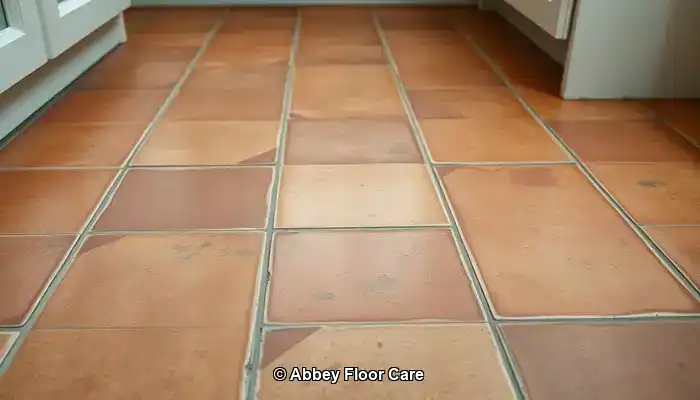
Terracotta tiles are an attractive flooring choice, especially for traditional or rustic homes in Surrey. Their natural tones and textures enhance any interior environment. However, despite their aesthetic appeal, terracotta tiles have a propensity to become dirty swiftly, making it imperative to comprehend the underlying reasons for this challenge in order to maintain them effectively and preserve their charm.
Expert Tips for Daily Maintenance of Terracotta Tiles
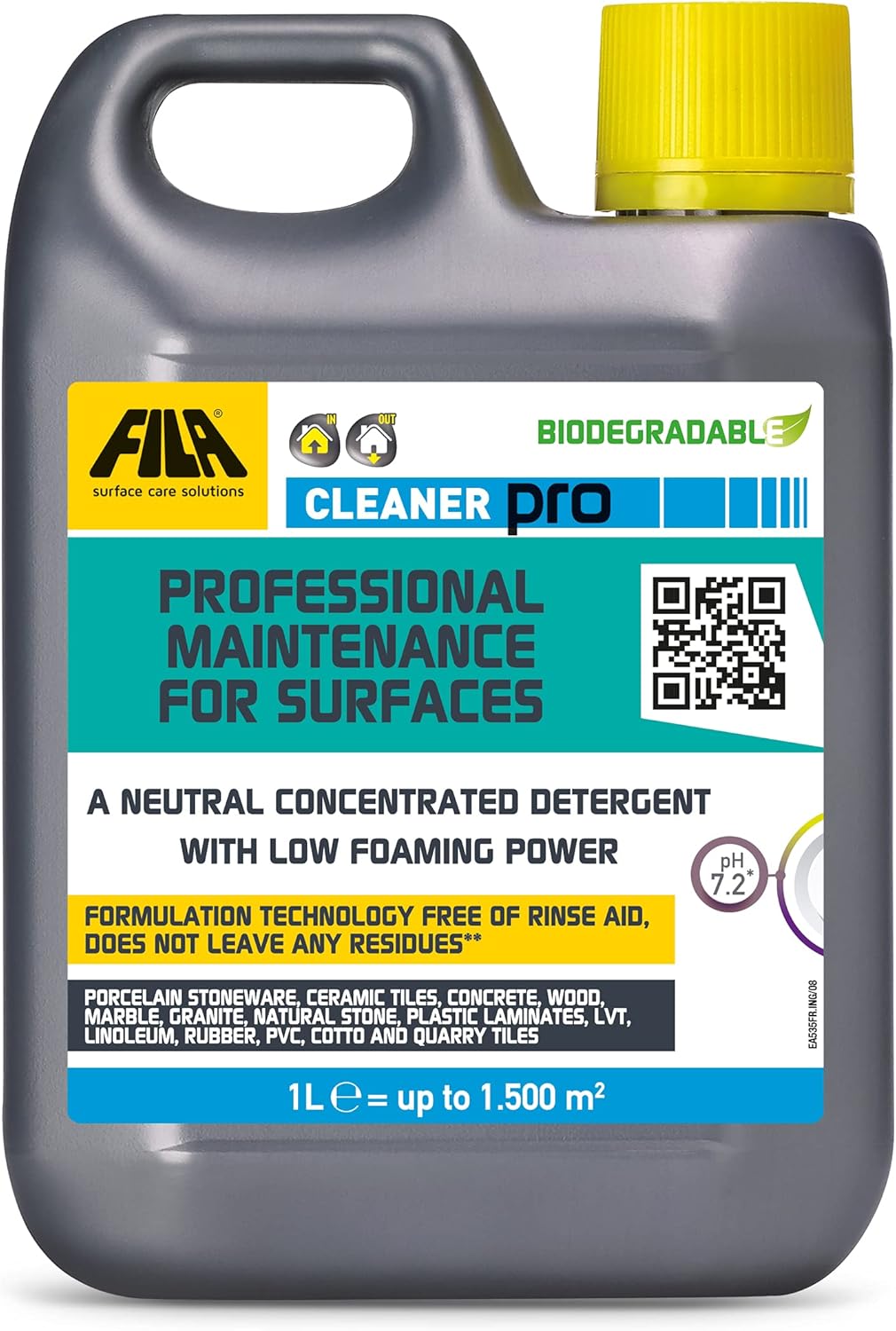
Fila Pro Floor Cleaner
|
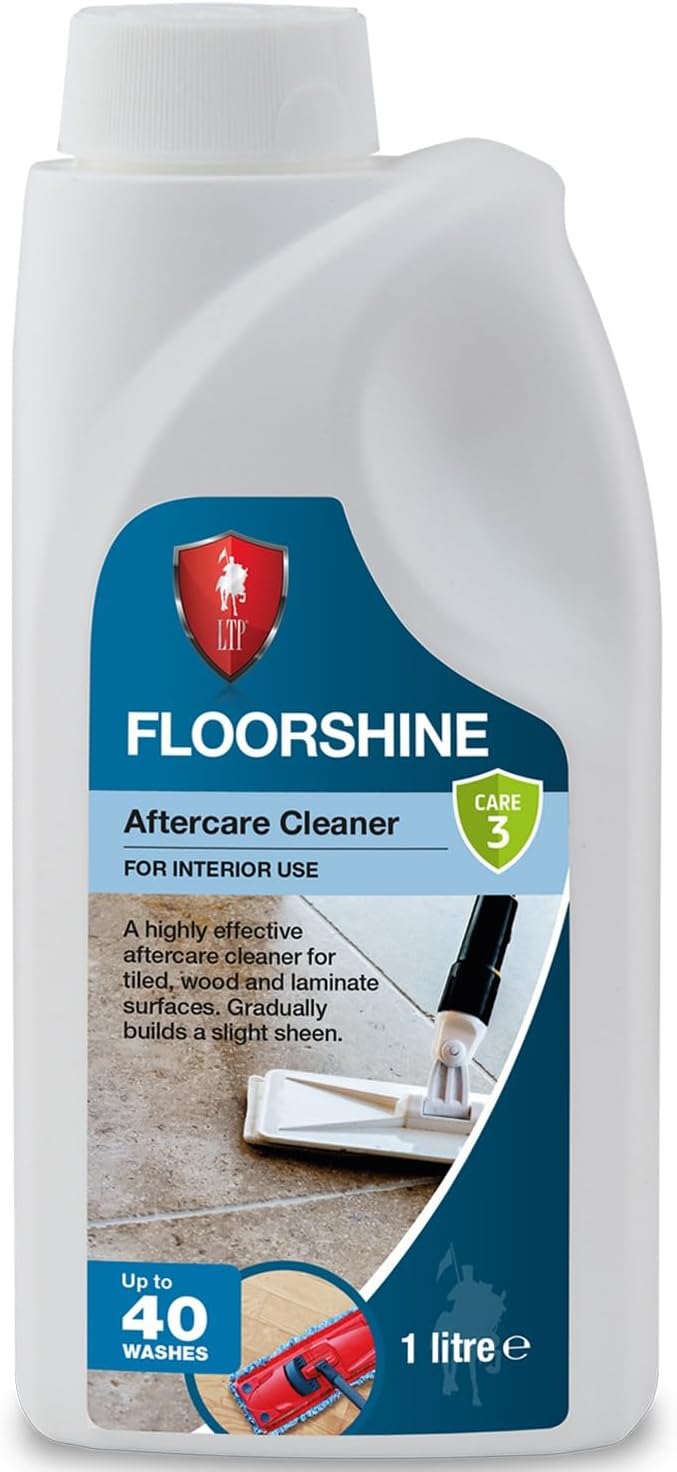
LTP Floorshine
|
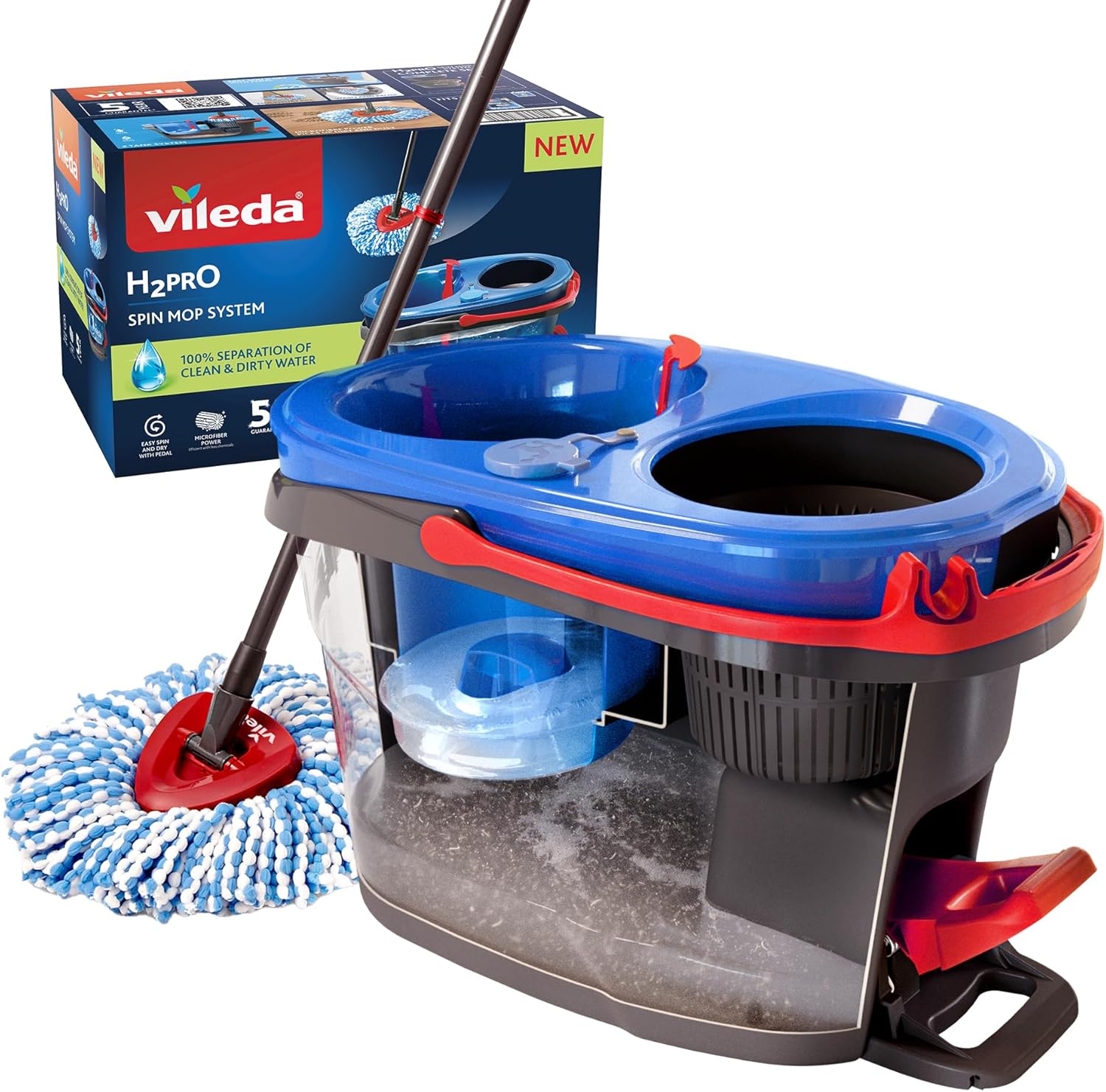
Vileda H2PrO Spin Mop System
|
Understanding Porosity: The Quick Accumulation of Dirt on Terracotta Tiles
Terracotta, composed of natural clay, is fired at lower temperatures compared to other tile types. This distinct manufacturing process results in a highly porous surface that resembles a sponge, allowing it to absorb moisture, oils, and dirt with ease. In everyday scenarios, this porosity enables grime to penetrate deeply into the tile, complicating removal with typical cleaning methods.
Unsealed terracotta tiles are particularly vulnerable. Without a protective layer, even minor spills or muddy footprints can lead to enduring stains. Over time, these challenges contribute to a dull, stained appearance that often necessitates professional intervention for restoration and cleaning.
How Does the Weather in Surrey Affect the Cleanliness of Terracotta Tiles?
The climate in Surrey plays a significant role in how quickly dirt accumulates on terracotta floors. The region's frequent rainfall and damp conditions result in increased moisture being tracked indoors, particularly in entryways and conservatories. Homes situated near wooded areas or gardens are even more susceptible, as soil, pollen, and organic matter can easily enter the home, particularly if footwear isn't removed at the entrance.
Which Daily Habits Contribute to Faster Dirt Accumulation on Terracotta Tiles?
In addition to environmental factors, certain daily practices exacerbate dirt accumulation on terracotta tiles. Using inappropriate cleaning agents, such as acidic solutions or bleach, can strip protective coatings, damaging the tile's surface. While steam mops are trendy, they can force moisture deeper into the tile, worsening the problem over time.
Areas with high foot traffic, such as kitchens and hallways, are naturally more prone to wear. Without regular sweeping and mopping, dirt quickly builds up, embedding itself within the tile's texture and creating long-lasting cleanliness issues.
Effective Strategies for Keeping Terracotta Floors Clean
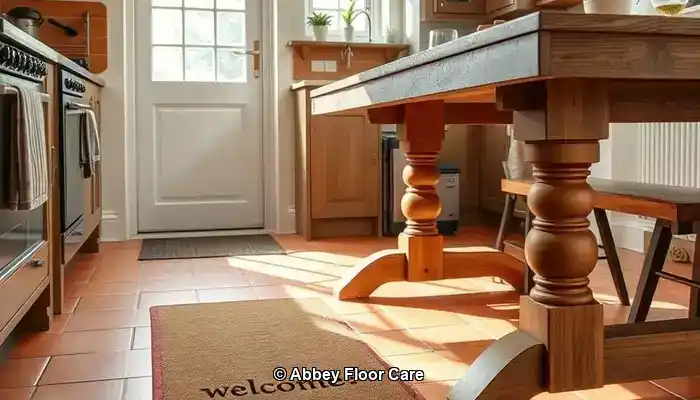
Maintaining immaculate terracotta floors necessitates proactive measures to deter dirt from settling initially. In homes across Surrey, where dampness and garden traffic are prevalent, implementing preventive strategies is vital to sustaining the natural beauty of terracotta tiles.
Why Sealing Your Terracotta Tiles is Essential for Dirt Prevention
Applying a high-quality sealant serves as the most effective method to prevent terracotta from becoming dirty too swiftly. A premium, breathable sealant creates a protective barrier that repels moisture, oils, and grime. For homes in Surrey, where humidity fluctuates, sealing is crucial to preventing water absorption that can lead to stains and mould growth.
It is advisable to reseal terracotta approximately every 12 to 18 months, depending on foot traffic and exposure levels. In particularly active areas, such as kitchens and hallways—where daily use is common—more frequent resealing may be necessary. Ensure you select a sealant specifically designed for porous stone, avoiding glossy finishes that could trap dirt on the surface.
Smart Design Choices: How Rugs and Mats Protect Your Terracotta Flooring
Strategically placing rugs and mats can greatly reduce the amount of dirt that reaches your terracotta tiles. Heavy-duty doormats at entrances capture mud and moisture before they can enter your home. In high-traffic areas, such as hallways or beneath dining tables, area rugs act as protective barriers against wear and tear.
For rooms that connect directly to the outdoors, consider using washable runners that can be cleaned regularly. These not only assist in maintaining the tiles but also add warmth and style to your living areas, enhancing the overall aesthetic of your home.
How to Effectively Manage Moisture in Homes Across Surrey
Given Surrey's frequent rainfall and humidity, managing moisture is crucial to keeping dirt at bay on terracotta tiles. To combat this, utilise dehumidifiers in enclosed spaces and ensure adequate ventilation throughout your home. Promptly wiping up spills and refraining from leaving wet items—such as shoes or towels—on the floor is essential.
If your terracotta is located in a conservatory or garden room, consider installing blinds or UV filters to minimise condensation and protect against sun damage. These simple adjustments can significantly enhance the longevity and appearance of your tiles over the years.
By implementing effective sealing, thoughtful design choices, and moisture management strategies, homeowners in Surrey can greatly reduce how quickly dirt accumulates on their terracotta floors. The following section will explore the finest cleaning practices to maintain your tiles looking fresh and welcoming every day.
Optimal Cleaning Techniques for Terracotta Tiles
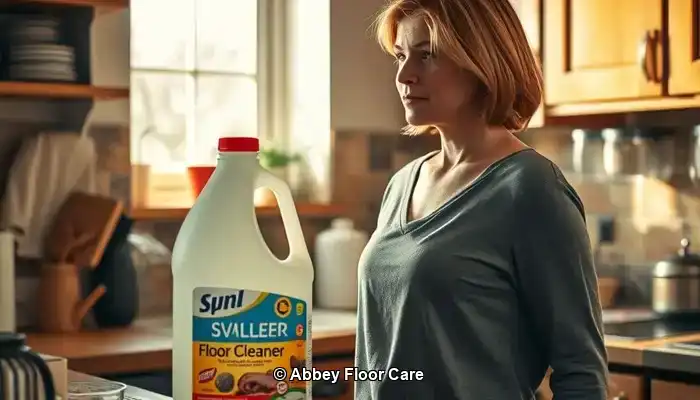
Even with appropriate sealing and preventive measures, terracotta floors require consistent attention to retain their natural beauty. The key to success lies in employing the right techniques and products that clean effectively without causing harm to the porous surface of the tile.
Establishing a Consistent Daily and Weekly Cleaning Schedule
In Surrey homes, where outdoor elements frequently accompany indoor living, daily sweeping or vacuuming becomes essential. Utilising a soft-bristle broom or a vacuum designed specifically for hard floors effectively removes dust, grit, and organic debris before they can settle into the tile.
For weekly cleaning, mop with warm water and a pH-neutral cleaner that is designed explicitly for natural stone surfaces. Avoid soaking the floor; damp mopping is the ideal method. Excess water can penetrate the tile, leading to stains or mould growth, particularly in older or inadequately sealed installations.
Selecting the Most Effective Cleaning Products for Terracotta
Opt for cleaning products that are gentle yet effective. Seek out labels indicating “stone-safe,” “non-acidic,” or “pH-neutral.” In Surrey, where eco-conscious living is increasingly popular, many homeowners prefer biodegradable cleaners that are safe for both children and pets.
Avoid multi-surface cleaners containing bleach, ammonia, or citrus extracts, as these can strip sealants and etch the terracotta, rendering it more susceptible to staining. For stubborn stains, utilise a soft cloth along with a diluted stone cleaner. Avoid scrubbing with abrasive pads or wire brushes, as these can scratch the surface and complicate future cleaning.
What Cleaning Practices Should Be Avoided? The Dangers of Harsh Chemicals and Steam Cleaning
While steam mops may appear convenient, they are inappropriate for terracotta. The high heat and moisture can seep into the tile and compromise the sealant, causing long-lasting issues. Similarly, acidic cleaners such as vinegar or lemon juice—even when diluted—can erode the tile’s surface and lead to discolouration.
Stick to gentle cleaning methods, and always conduct a test of new products on a small, inconspicuous area before applying them to the entire floor.
Professional Versus DIY Care for Your Terracotta Tiles: When to Seek Help?
Many homeowners in Surrey begin with DIY methods for maintaining their terracotta floors. While regular sweeping and mopping are beneficial, there comes a time when professional assistance becomes necessary for optimal care.
When Should You Consider Consulting a Tile Specialist in Surrey?
If your terracotta tiles exhibit signs of deep staining, uneven colour, or surface wear, it is prudent to seek professional assistance. Tile care specialists in Surrey utilise advanced equipment and stone-safe products that penetrate deeper than household cleaners can. They can also evaluate whether your sealant has deteriorated and recommend a customised resealing schedule tailored to your home’s unique conditions.
Restoration services typically encompass deep cleaning, stain removal, and reapplication of breathable sealants that protect without altering the natural appearance of the tiles. For older homes or heritage properties, specialists can often replicate the original finish to maintain authenticity and historical integrity.
Is Professional Maintenance Worth the Investment? Analyzing Cost Considerations
While DIY cleaning might appear more financially viable, it often yields only temporary results. Without proper sealing and deep cleaning, dirt continues to accumulate, necessitating more frequent maintenance and potentially causing irreversible damage.
In contrast, professional care extends the lifespan of your terracotta floors. A single restoration session can rejuvenate colour, eliminate embedded dirt, and secure the surface for several months or even years. In high-traffic areas, such as kitchens or hallways, this investment significantly reduces maintenance needs while enhancing visual appeal.
Homeowners in Surrey who focus on long-term property care and curb appeal frequently find that expert services offer peace of mind and superior results. Additionally, many local providers offer eco-friendly options and customised maintenance plans tailored to your lifestyle and needs.
Exploring Safe and Eco-Friendly Cleaning Alternatives for Terracotta
The earthy elegance of terracotta deserves maintenance that respects its natural characteristics. For homeowners in Surrey wishing to maintain clean floors without compromising health or environmental safety, eco-friendly cleaning methods are the ideal choice. Thankfully, modern products and techniques enable effective tile protection without resorting to harsh chemicals.
Choosing Non-Toxic Sealants and Cleaners for Terracotta
Many traditional sealants contain solvents that emit volatile organic compounds (VOCs), which can adversely affect indoor air quality. Today’s eco-friendly alternatives utilise water-based formulas that are low in VOCs and safe for use around both children and pets.
When selecting cleaners, look for labels that indicate “biodegradable,” “plant-based,” or “stone-safe.” These products are specifically formulated to lift dirt without damaging the porous surface of terracotta. Brands specialising in natural stone care often offer concentrated solutions that can be diluted for everyday use, minimising waste and excess packaging.
Finding Child- and Pet-Safe Cleaning Options for Your Home
In bustling Surrey households, safety is as crucial as cleanliness. Avoid utilising bleach, ammonia, and acidic cleaners like vinegar, which can damage the tile and present risks to pets and small children. Instead, opt for gentle formulas derived from coconut oil, citrus enzymes, or mineral-based components.
For those who prefer DIY solutions, a simple mixture of warm water and a few drops of castile soap can be surprisingly effective for light cleaning tasks. Always test any homemade solution on a small area first to ensure it doesn’t harm the sealant or finish of your terracotta tiles.
Adopting Sustainable Cleaning Practices for Terracotta Floors
Eco-friendly maintenance encompasses more than merely choosing the right products; it also involves cultivating sustainable habits. Utilise reusable microfiber cloths and mops instead of disposable options. Regular sweeping reduces the necessity for frequent wet cleaning. When resealing, select products with recyclable packaging and minimal environmental impact.
Numerous floor care professionals in Surrey now offer green cleaning services, employing certified non-toxic products and sustainable methods. If you're uncertain about where to begin, arranging a consultation with a local expert can assist you in establishing a routine that is both effective and eco-conscious.
Key Strategies for Preserving Your Terracotta Flooring
Terracotta flooring adds warmth, character, and timeless elegance to homes in Surrey, yet its porous nature necessitates careful attention to remain clean and vibrant. By understanding why terracotta becomes dirty quickly, sealing it appropriately, and adopting intelligent cleaning habits, you can significantly reduce grime accumulation and prolong the life of your tiles.
Whether managing a lively household or restoring a historic property, consistency is key. Daily sweeping, employing pH-neutral cleaners, and resealing regularly all contribute to maintaining a pristine appearance. And when stains or wear begin to appear, do not hesitate to seek the assistance of a local specialist for professional restoration services.
Utilising eco-friendly products and safe cleaning routines ensures that your floors remain attractive without compromising health or environmental safety. With the right strategies, terracotta can continue to be a stunning feature in your home for many years to come.
Ready to effectively protect your floors? Get in touch with us today for expert terracotta maintenance tailored to the unique conditions in Surrey. Let’s work together to ensure your home looks its very best—naturally.
Common Questions Regarding Terracotta Maintenance
Terracotta floors are a timeless choice, but they require specific care. Below are answers to the most frequently asked questions from homeowners in Surrey who wish to keep their tiles clean, protected, and visually appealing.
How Frequently Should You Reseal Your Terracotta Tiles?
Typically, terracotta should undergo resealing every 12 to 18 months in most Surrey homes. However, this frequency can vary based on foot traffic, moisture exposure, and whether the tiles are located indoors or outdoors. Areas like kitchens, hallways, and conservatories may necessitate more frequent resealing. If tiles begin absorbing water or appear dull, it might be time to consider resealing.
Is It Safe to Use Vinegar or Bleach on Terracotta Tiles?
No—vinegar, bleach, and other acidic or harsh cleaners can severely harm terracotta. These substances degrade sealants and etch the tile surface, leading to permanent discolouration. Always opt for pH-neutral, stone-safe cleaners specifically formulated for porous flooring.
What Type of Mop is Most Suitable for Cleaning Terracotta Floors?
A microfiber mop is ideal for terracotta. It effectively captures dust and dirt without scratching the surface and utilises minimal water, which is crucial for porous tiles. Avoid sponge mops or steam mops, as these can oversaturate the tile and compromise the sealant.
Are DIY Cleaning Solutions Safe for Terracotta Tiles?
Yes, but with caution. A mild mixture of warm water and castile soap can be effective for light cleaning tasks. Always test any homemade solution on a small, inconspicuous area first. Avoid anything acidic or abrasive, and never use homemade cleaners on unsealed tiles.
What Should I Do If My Tiles Have Already Stained?
If you notice that stains have set in, professional restoration services are your best option. Tile care specialists in Surrey can deep clean, remove embedded dirt, and reseal the surface to restore the tiles' original colour and texture. DIY methods may exacerbate the damage if inappropriate products are used.
The Article Ultimate Guide to Maintaining Spotless Terracotta Tiles first appeared on https://www.abbeyfloorcare.co.uk
The Article Keep Terracotta Clean Longer: Effective Maintenance Tips was originally published on https://fabritec.org
The Article Terracotta Maintenance Tips for Longer Lasting Cleanliness Was Found On https://limitsofstrategy.com





No responses yet